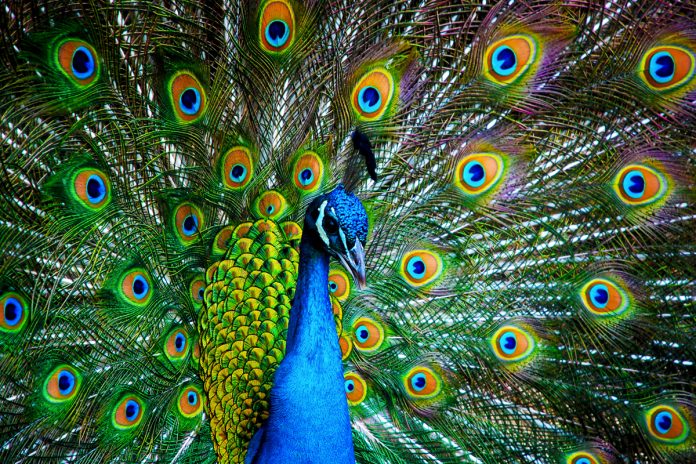
Dr Mollie Manier from the Department of Biological Sciences at The George Washington University lifts the lid on the arena of sexual selection theory
Charles Darwin developed sexual selection theory to explain why the peacock should possess such splendid tail feathers, despite what must be a disadvantage against predators. He proposed that the male’s showy display defies its evolutionary disadvantage in the arena of natural selection by winning in the arena of sexual selection, where success is defined not by survival of the fittest but by acquiring the most mates. Here, females find the largest and showiest male ornaments the most attractive, and these males leave sexy sons with the best features. However, female preference is insatiable; males evolve larger and showier ornaments to satisfy the demanding female taste, leading to tail feathers disproportionate to the poor male that must carry them.
What Darwin did not discuss is that sexual selection continues after mating has occurred, in the form of sperm competition and cryptic female choice. Here, the arena of sexual selection becomes the female reproductive tract, and males evolve complex sperm that battle each other for fertilisations, assisted by seminal fluid proteins that modify female behaviour, morphology, and physiology to favour the male that carried them. However, the female here is not simply a passive vessel for ejaculates. She provides an environment that can nurture as well as kill.
Within the female reproductive tract of the diminutive Drosophila fruit fly, an epic battle unfolds whose evolutionary outcome has produced the longest sperm known to science – the 5.8cm long sperm of D. bifurca. Evidence from a distant relative, D. melanogaster, suggests that these giant sperm are selected for by the equally impressive female sperm storage organ, the seminal receptacle (SR), which can reach 8cm in D. bifurca. In D. melanogaster, which itself sports sperm a mere 1.8mm long, the female’s SR selects for longer sperm, but only when the SR itself is longer. Scientists believe this dynamic may have led to the coevolution of SR length and sperm length across the Drosophila lineage, in which species whose males have longer sperm also have females with longer sperm storage organs.
This coevolutionary dynamic may have also been fuelled by a genetic correlation between sperm length and SR length, an evolutionary requirement of the Fisherian runaway process thought to drive evolution of extreme male ornaments like the peacock’s tail. The extreme nature of sperm length as well as its genetic correlation with the female’s post-mating “preference” for longer sperm (in the form of extremely long sperm storage organs), suggests to scientists that a similar runaway process drove the evolution of giant sperm and sperm storage organs in the tiny fly.
Improving reproductive ability
But how do longer sperm do better? And how does the female reproductive tract facilitate this advantage? Genetic tools have allowed us to transform ordinary flies into ones that express a jellyfish green fluorescent protein (GFP) or a coral red fluorescent protein (RFP) in sperm heads, allowing us to precisely track and count sperm from different males within the female reproductive tract. Females mated first to a GFP male and later to an RFP male (or vice versa) can be frozen at different time points after mating, and sperm can be counted in all regions of the reproductive tract, providing snap shots in time of sperm displacement and cryptic female choice.
In D. melanogaster, approximately 1200-1600 sperm are ejaculated into the main chamber of the female reproductive tract, called the bursa or uterus. From there, sperm immediately begin to enter one of three sperm storage organs: the SR or paired mushroom-shaped spermathecae. Within the spermathecae, sperm stored from a previous male get to stay where they are, and the stores are simply topped off with sperm from the second male. In the SR, however, the first male’s sperm are physically displaced into the bursa by incoming sperm from the second male. This process continues until the proportion of first-male and second-male sperm in the SR is equal to that in the bursa, at which point an equilibrium has been reached. The displaced first-male sperm and unstored second-male sperm in the bursa are then ejected by the female, ending the displacement process.
The sperm remaining in the SR and spermathecae now constitute the “fertilisation set”, the pool of sperm now available for fertilisation. When females begin laying eggs, they will use sperm from one of their three sperm storage organs and can bias fertilisation to favour the first or second male’s sperm in either the SR or spermathecae.
She can also bias sperm use to favour one type of sperm storage organ over the other. Because fertilisation in insects is very difficult to observe directly, we estimate sperm use bias using mathematical models based on numbers of first- and second-male sperm remaining in the different sperm storage organs and paternity success in offspring.
We have applied this approach to discover that some species favour the SR for fertilisations, while others use both the SR and spermathecae equally. Moreover, sperm use bias may favour the first or second male depending on the sperm storage organ. This pattern of bias across the female reproductive tract allows females to favour one male over another by switching the sperm storage organ from which she draws sperm for fertilisation.
The female reproductive tract of Drosophila represents the greatest morphological diversity yet documented within an evolutionary lineage, with SR lengths varying by a factor of 200, from 400 µm in D. pseudoobscura to 80,000 µm in D. bifurca. The species richness of Drosophila (approximately 2500 species) and its genetic resources (approximately 25 species with sequenced genomes) adds to the power of this modest fly to help us understand how form affects function, to test models of male-female coevolution, and to explore the relationship between microevolutionary process and macroevolutionary pattern in traits that vary in the simplest way possible, along only a single dimension.
Please note: this is a commercial profile
Dr Mollie Manier
Department of Biological Sciences,
The George Washington University
Tel: +1 202 994 0126










